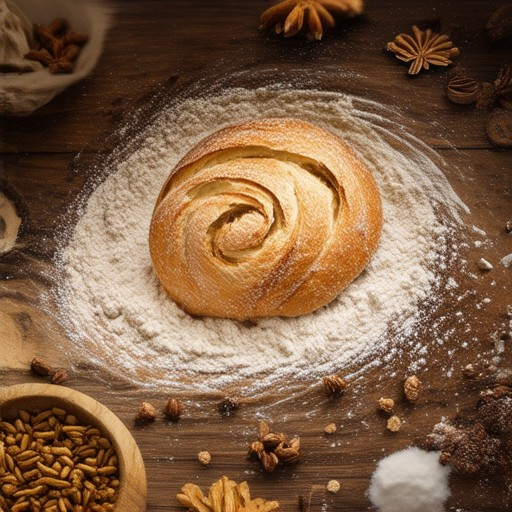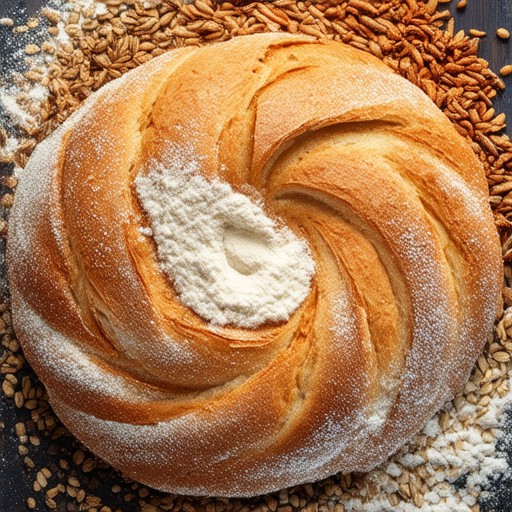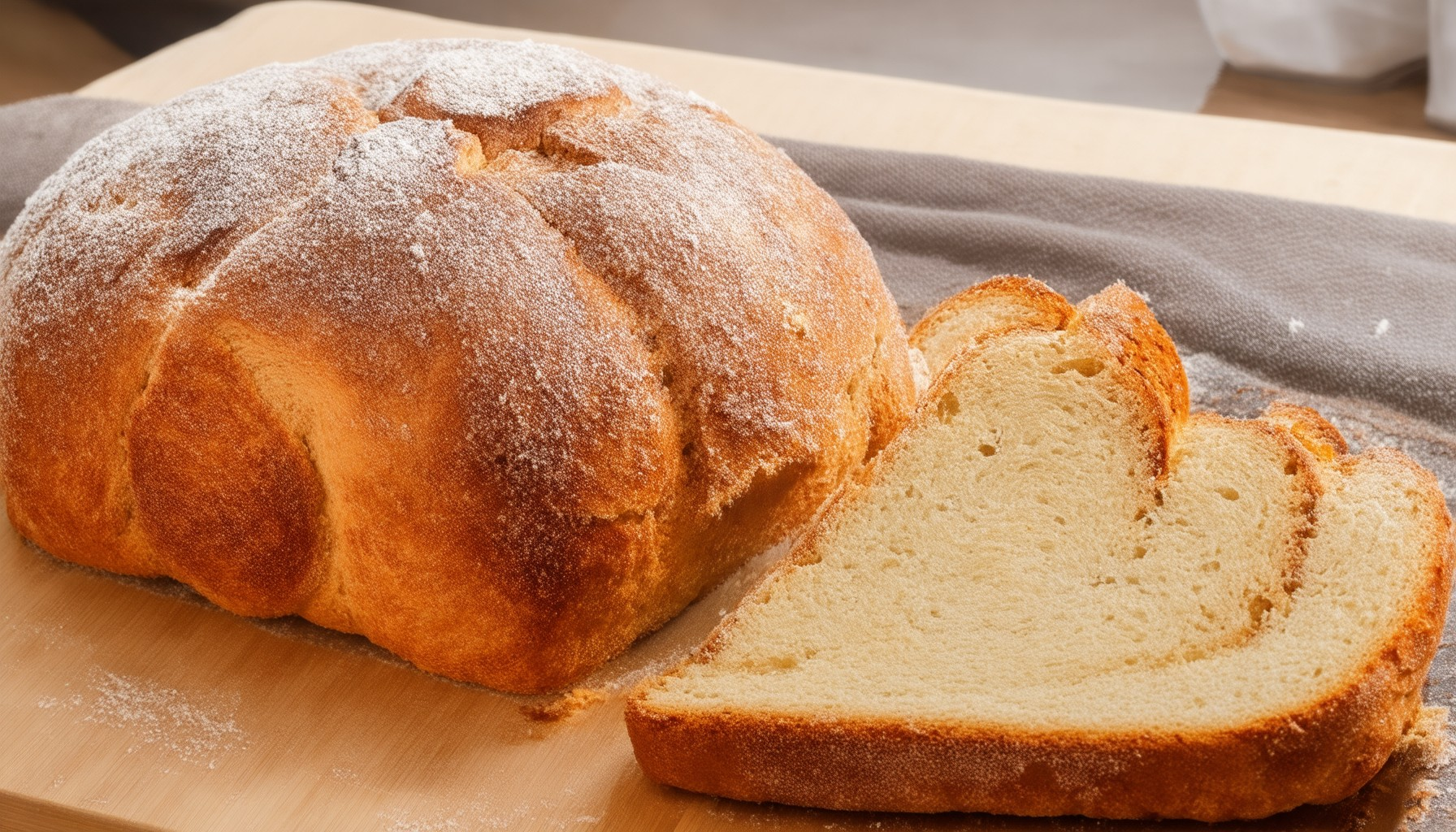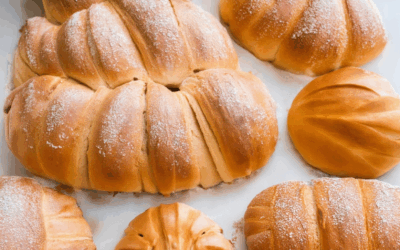Baking enthusiasts, rejoice! Discover the delightful art of crafting sweet bread with anise, a flavorful addition that adds depth and a unique twist to your baked goods. Whether you’re a seasoned baker or new to the kitchen, this article delves into the secrets of incorporating anise into your recipes, offering expert tips and variations to elevate your bread-making skills. From traditional Easter bread to modern twists, anise adds a distinctive licorice-like flavor that’s beloved in many cultures. Learn how to use both seeds and extracts to achieve the perfect balance in your sweet bread, enhancing its aroma and taste. Explore the differences between star anise and sweet anise, discover how to adjust the anise flavor in your recipes, and gain valuable insights into creating bread that stands out. With comprehensive guidance and practical advice, this article is your ultimate resource for mastering the art of making sweet bread with anise.
Key Takeaways
– Anise Adds a Unique Licorice-Like Flavor: Transform your sweet bread with the distinct aroma and taste of anise, derived from anise seed extract.
– Enhances Aromatic Profile and Complements Spices: Elevate your baked goods with a sweet, slightly bitter note that pairs seamlessly with cinnamon and nutmeg.
– Versatile for Sweet and Savory Applications: Use anise in both sweet and savory dishes to add depth and complexity.
– Proper Flavor Adjustment Techniques Balance the Recipe: Learn how to adjust measurements and baking methods to achieve the perfect anise balance.
– Incorporating Anise Seeds for Rich Licorice Flavor: Follow step-by-step guides to effectively integrate anise seeds into your recipes.
– Measure Carefully and Optimize Texture: Ensure fine grinding for a smooth licorice taste and experiment with complementary spices for a balanced flavor.
– Consider Allergies and Substitutions: Be mindful of potential allergies and explore alternatives like apple cider vinegar for varied recipes.

How to Use Anise in Baking
Anise, a distinctive spice with a licorice-like flavor, adds a unique touch to various baked goods. Here’s how to effectively incorporate anise into your baking projects:
Substituting Anise Extract with Anise Seeds
- Replace 1 teaspoon of anise extract with ¼ teaspoon of ground anise seeds .
- Grind the seeds finely before use to ensure even distribution of flavor.
Incorporating Anise into Baked Goods
- Add ½ teaspoon of anise powder to cookie dough for a subtle licorice flavor.
- Mix 1 teaspoon of anise seeds into bread or cake batters for a texture enhancement.
- Pairs well with other spices like cinnamon and nutmeg in bread recipes.
Recipe Idea: Anise-Flavored Cookies
- Combine 2 cups flour , 1 cup sugar , 1 teaspoon baking powder , ½ teaspoon salt , and 1 teaspoon anise extract in a bowl.
- Mix in 2 eggs and ⅓ cup oil until smooth.
- Sift in 2 cups chocolate chips and ½ cup chopped walnuts for added texture.
- Bake at 375°F for 10-12 minutes, checking for doneness before removing from pans.
Storing Anise Properly
- Store anise in an airtight container to prevent rancidity.
- Keep away from direct sunlight and heat to maintain freshness.
Experiment with small batches to discover the perfect anise quantity for your taste preferences. Enjoy the unique flavor that anise brings to your baked creations!
What Makes Homemade Bread Sweet?
The sweetness of homemade bread arises from a combination of factors involving ingredients, chemistry, and baking techniques. Here’s a breakdown:
- Sugar Content : The primary source of sweetness comes from added sugar, which yeast ferments to produce ethanol and carbon dioxide, affecting both flavor and texture.
- Maillard Reaction : During baking, amino acids react with sugars to form compounds responsible for the bread’s brown color and nutty flavor, enhancing sweetness.
- Malted Ingredients : Products like malted barley powder contain enzymes that convert starches into sugars, boosting sweetness and improving dough structure.
- Flour Type : Using bread flour, which has lower sugar content compared to all-purpose flour, influences the final taste, though higher sugar flours may contribute to sweetness.
- Starch Fermentation : Yeast converts starches into sugars, further contributing to sweetness and affecting dough consistency.
- Baking Conditions : High temperatures caramelize sugars, deepening flavor, while proper proofing ensures efficient fermentation, enhancing overall taste.
These interconnected processes result in a complex, sweet flavor profile in homemade bread.

What is the difference between star anise and sweet anise?
Star anise and sweet anise are two distinct spices commonly used in cooking, though they share some similarities. Here’s a breakdown of their differences:
- Flavor and Aroma: – Star Anise: Has a strong, licorice-like flavor with a sweet undertone. It is pungent and aromatic, often used in small quantities due to its intensity. – Sweet Anise: Tastes slightly sweeter and spicier than star anise, with a more delicate aroma. It is less intense, making it a versatile option for various dishes.
- Physical Appearance: – Star Anise: Typically appears as small, pod-shaped clusters of seeds, resembling stars, hence its name. Each pod contains several seeds. – Sweet Anise: Looks more like regular anise seeds, smaller and rounder, with a smoother texture compared to star anise.
- Culinary Uses: – Star Anise: Commonly used in Middle Eastern, Mediterranean, and North African cuisines. It is often ground into a powder and used in dishes like lentil soups, stews, and marinades. – Sweet Anise: Used in a variety of dishes, including baked goods, confections, and beverages. It pairs well with sugar and is often found in Egyptian and Greek cuisine.
- Origins: – Star Anise: Originally from China and the eastern Mediterranean, particularly Syria. – Sweet Anise: Grown primarily in Egypt, the Nile Valley, and other parts of Africa.
Both spices are valuable in culinary applications, but their unique profiles allow for diverse use in recipes. Whether you’re looking for a bold, licorice flavor or a sweeter, spicier note, star anise and sweet anise offer distinct options for enhancing your dishes.

Understanding Licorice-Like Flavoring in Breads and Cakes
The licorice-like flavor often found in breads and cakes is primarily derived from the use of anise seed extract . Anise, a fragrant spice obtained from the seeds of the Pimpinella anisum plant, imparts a unique sweet and aromatic profile that closely resembles licorice. This flavor is particularly popular in various regional baking traditions around the world.
How Anise Contributes to Bread and Cake Flavors
- Aromatic Profile : Anise adds a distinctive aroma and taste that enhances the overall sensory experience of baked goods.
- Complementary Flavors : Its sweet, slightly bitter notes pair well with other spices like cinnamon and nutmeg, creating complex flavor profiles.
- Cultural Influence : Commonly used in Middle Eastern, German, and Austrian baking, anise is a staple in traditional recipes like pita, baguette, and sweet breads.
Benefits of Using Anise in Baking
- Enhances Aroma : The strong fragrance of anise makes baked goods more appealing.
- Versatility : Suitable for both sweet and savory applications, anise adds depth to doughs and batters.
- Potential Health Benefits : Some studies suggest anise may have antioxidant properties, contributing to overall dietary benefits.
By thoughtfully incorporating anise seed extract or whole seeds into bread and cake recipes, bakers can achieve a rich, licorice-like flavor that adds a unique touch to their creations.
Adjusting Anise Flavor in Sweet Bread
To balance the anise flavor in your sweet bread recipe, consider the following methods:
- Reduce Anise Extract: Lower the amount of anise extract to 1/4 to 1/2 teaspoon depending on your preference. Start with 1/4 teaspoon and adjust accordingly.
- Use Butter Instead of Oil: Incorporate a mix of butter into your recipe. Replace half of the oil with unsalted butter to mellow the anise flavor and enhance moisture.
- Mix Flours: Experiment with a blend of all-purpose flour and whole wheat flour. This adds texture and balances the sweetness without overpowering the anise.
- Add Complementary Spices: Enhance your recipe with a pinch of cinnamon or nutmeg. These spices add warmth and depth without clashing with the anise.
- Adjust Baking Temperature and Time: Reduce the oven temperature by 25°F (14°C) and extend the baking time slightly. This allows the flavors to develop more evenly.
- Monitor Yeast Health: Ensure your yeast is active by activating it properly before baking. A healthy yeast will contribute to better fermentation and flavor balance.
By implementing these adjustments, you can achieve a more harmonious balance between the anise flavor and the rest of your sweet bread recipe. Remember to taste and adjust as you go to find the perfect blend that suits your preferences.

How to Incorporate Anise Seeds for Licorice Flavor
To achieve the perfect licorice flavor in your sweet bread, follow these steps for incorporating anise seeds effectively:
Ingredients to Include
- 1 ½ cups all-purpose flour
- 1 tsp baking powder
- ½ tsp salt
- 2 large eggs
- ¾ cup sugar
- 1 cup milk
- ¼ cup vegetable oil
- 1 tsp vanilla extract
- 1 tsp anise seeds, crushed or ground
- Optional: chopped walnuts, dried fruit, or chocolate chips
Step-by-Step Instructions
- Preheat Oven: Begin by preheating your oven to 350°F (175°C). Grease a loaf pan or line a muffin tin with parchment paper.
- Mix Dry Ingredients: In a bowl, whisk together flour, baking powder, and salt. Add sugar, milk, oil, vanilla, and anise seeds. Mix until smooth.
- Incorporate Wet Ingredients: Pour the wet mixture over the dry ingredients and stir until fully combined. Let the dough rest for 5 minutes to allow the anise seeds to absorb moisture.
- Add Mix-Ins: Fold in optional additions like nuts or dried fruit for added texture and flavor.
- Bake: Pour the batter into prepared pans and bake for 25-30 minutes, or until a toothpick inserted comes out clean.
- Cool: Allow the bread to cool slightly before slicing. Enjoy warm or at room temperature.
Tips for Success
- Anise Measurement: Use 1 tsp for a mild licorice flavor; adjust to taste.
- Texture Consideration: Ensure grinder is fine enough to prevent crunch.
- Flavor Balance: Experiment with spices like cinnamon or honey for a balanced taste.
- Storage: Keep fresh for 2-3 days; refrigerate for longer storage.
Serving Suggestions
- Pair with sweet butter, jam, or tangy cheeses for a flavorful experience.
Troubleshooting
- If bread lacks licorice flavor, increase anise seeds to 1 ½ tsp.
- For a smoother licorice taste, pair with cinnamon or honey.
Allergies and Substitutions
- Anise may cause allergic reactions in some individuals.
- Substitutes like apple cider vinegar or orange juice can be used if preferred.
By following these steps and tips, you can successfully incorporate anise seeds into your sweet bread for a rich licorice flavor. Enjoy baking and savor the unique taste of your homemade bread!





0 Comments